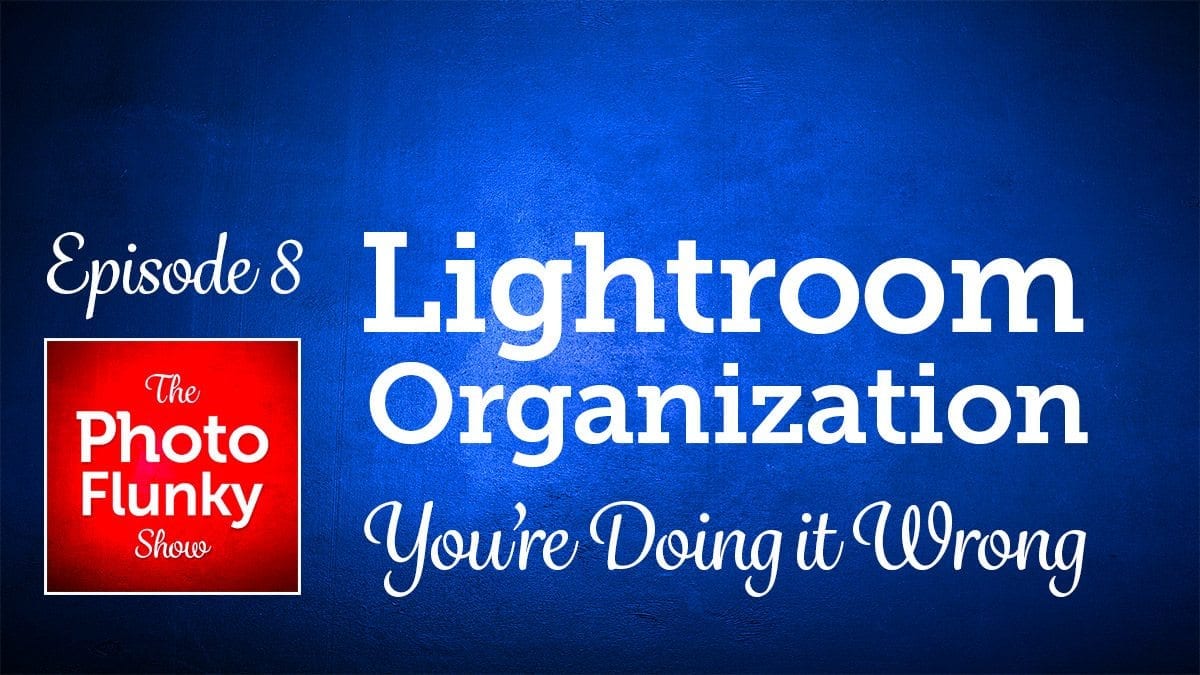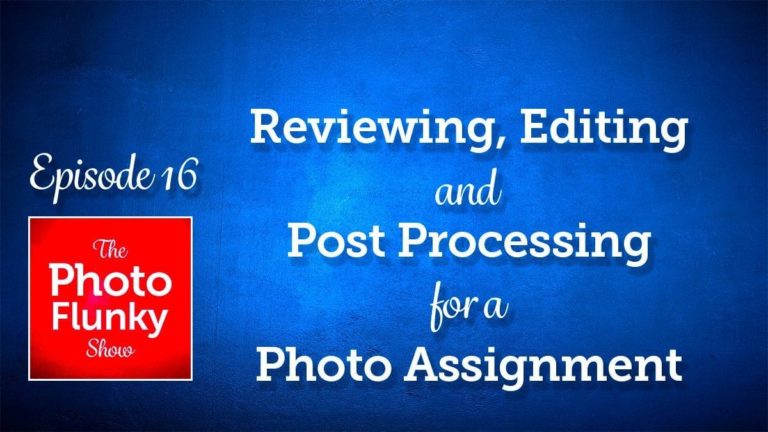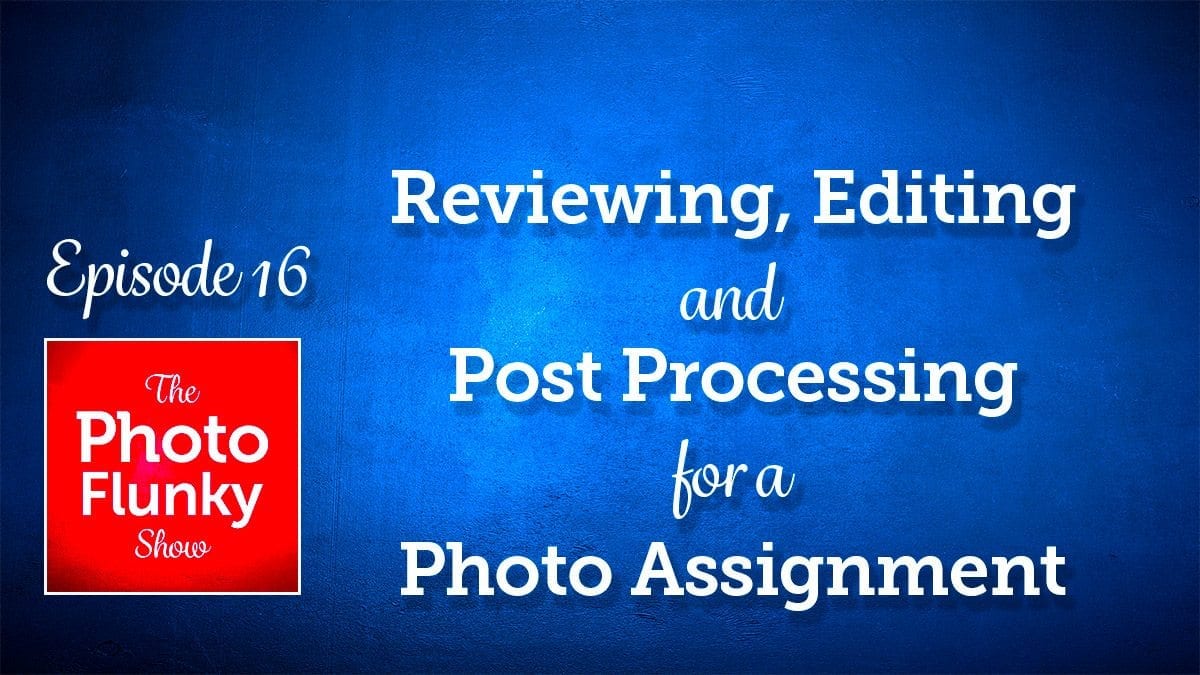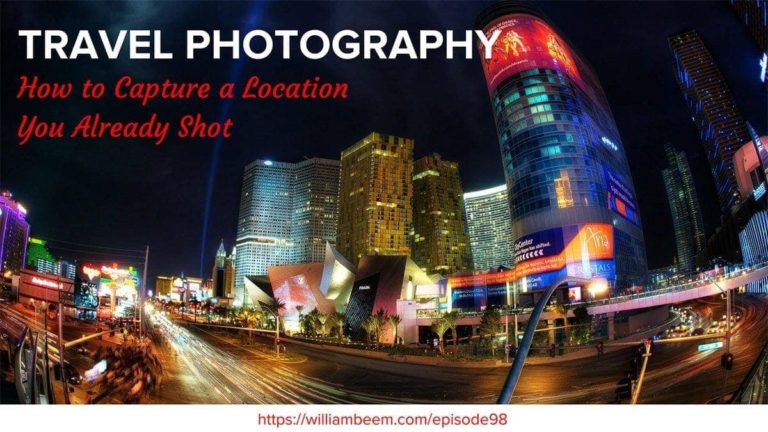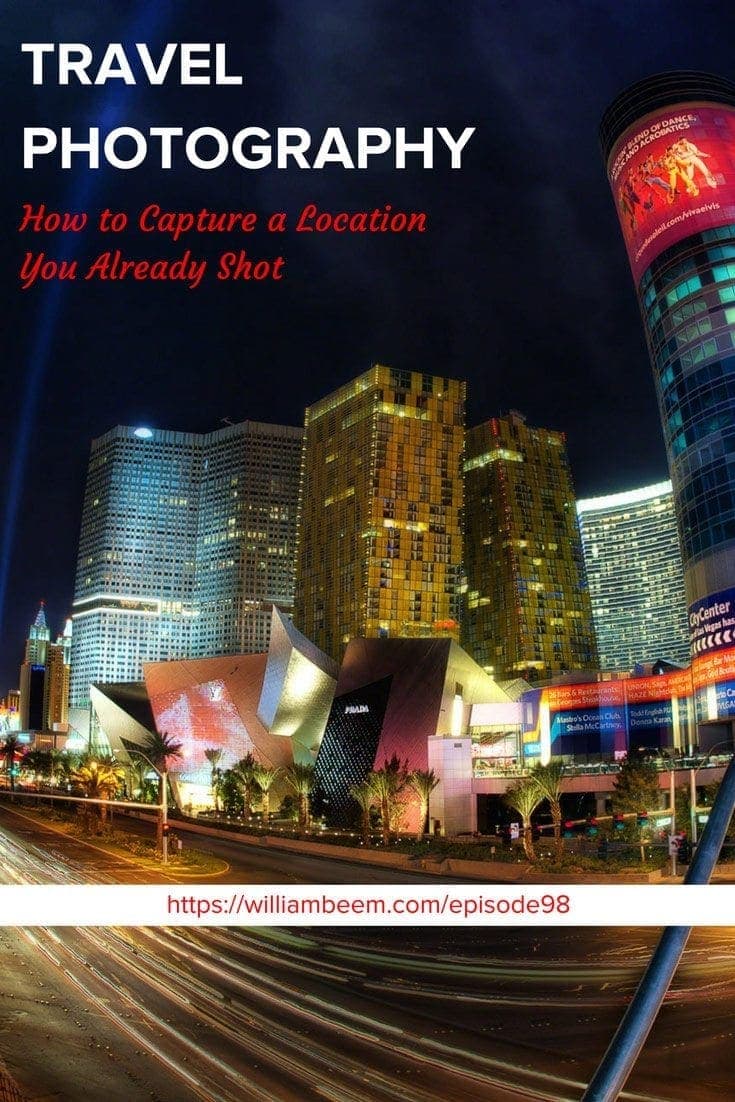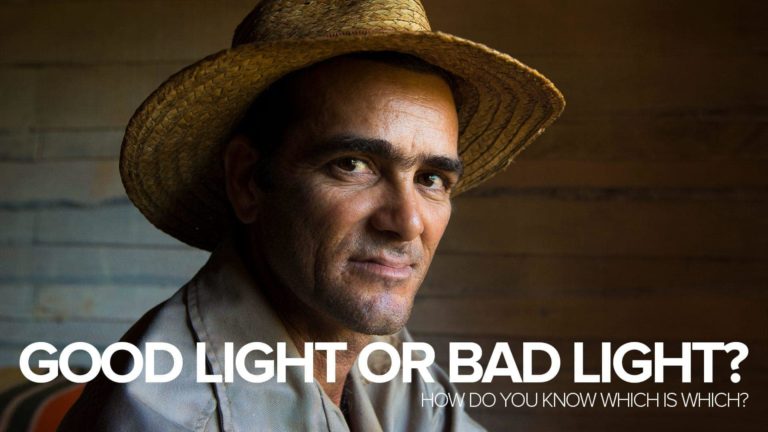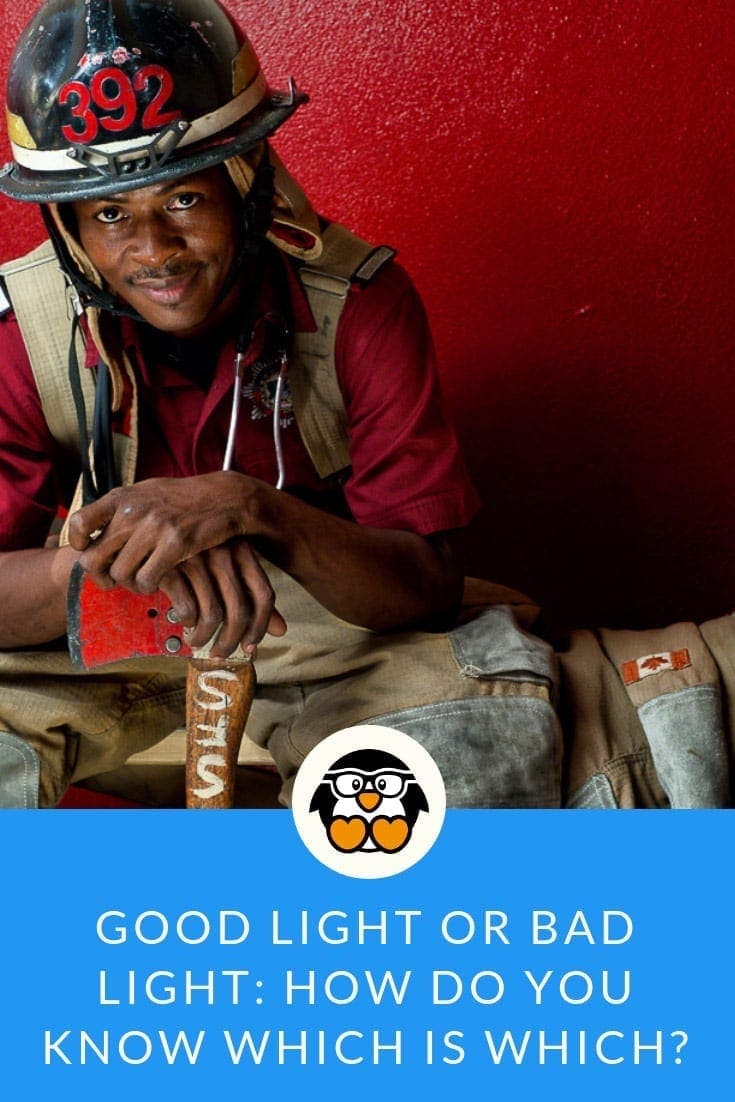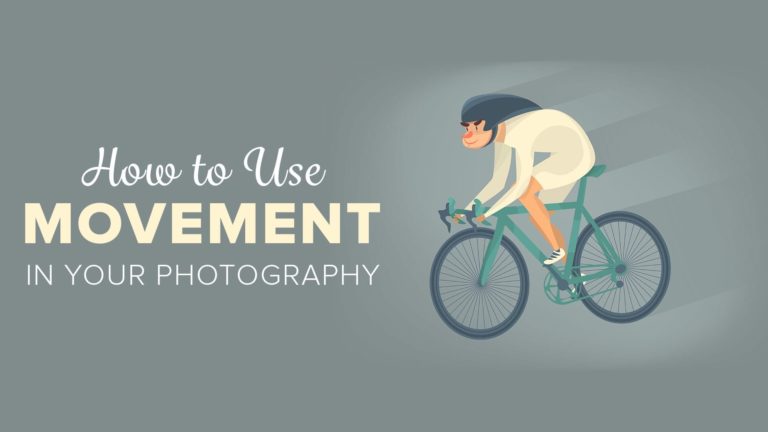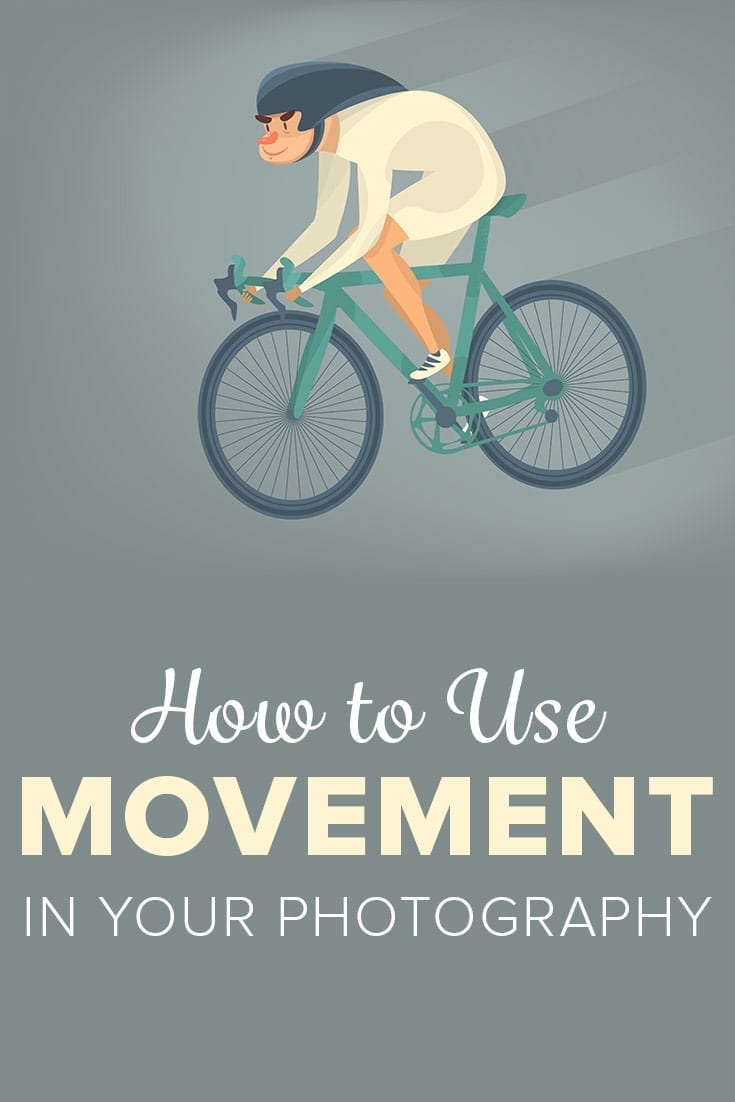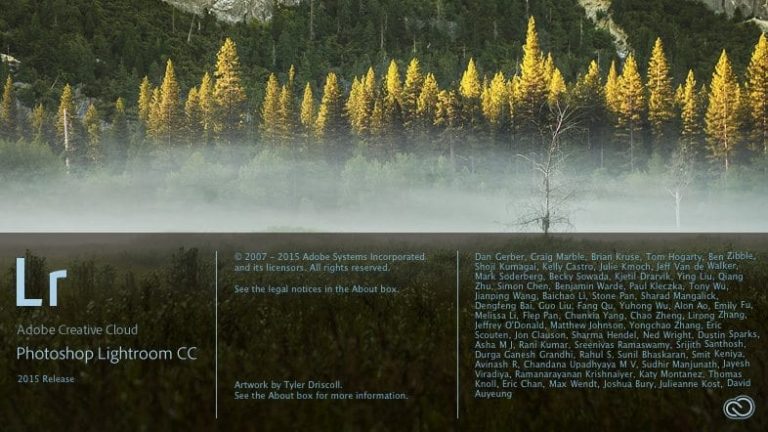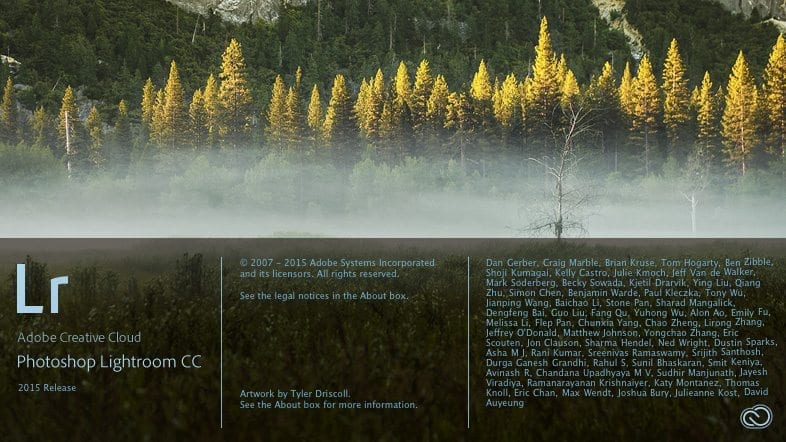Affiliate Disclosure: We earn a commission if you purchase through one of our links at no additional cost to you.
Lightroom Organization: My 3 Point System
With the demise of Aperture, most of us are using Lightroom to organize our photos. In Episode 8 of The Photo Flunky Show, we’ll talk about some classic mistakes people make in Lightroom organization and what you should do, instead.
I share my three point system for Lightroom organization to keep things simple and effective.
In the links section below, you can find my Keyword hierarchy to use as an example for your own Lightroom organization.
Check out my course – Where’s My Photo? – to learn how to optimize your Lightroom catalog and find your photos. There are plenty of tools inside of Lightroom Classic and I’ll show you how to use them to get every photo in its place.
Related Links
Subscribe to The Photo Flunky Show
Thank you for listening to The Photo Flunky Show. Make sure you get every episode by subscribing.
iTunes – https://williambeem.com/itunes
Stitcher – https://williambeem.com/stitcher
Google Play – https://williambeem.com/googleplay
Blubrry – https://williambeem.com/blubrry
Transcript
I’m your host, William Beem. Welcome to the Photo Flunky Show, Episode number eight.
Today’s topic: Lightroom Organization – You’re Doing It Wrong!
Thanks for joining the Photo Flunky Show. You can find us at photoflunky.com. Also now available on iTunes and Stitcher Radio. There are links at photoflunky.com. Show notes are available at williambeem.com/episode8.
Today, let’s talk about Lightroom organization, and there are really two main things that you want from organizing your photos in Lightroom. This is not going to delve into any of the post processing, book creation maps or any of that stuff. All this is about today is organization and all you really want, the benefits from organization, is to save time and find the photos that you want when you want them. It sounds simple. It’s what everybody needs when you’re busy working on something. You don’t want to have to fight your organization system; you want it to work for you.
So let’s start off with some of the classic organization mistakes that people make with Lightroom.
Keep in mind that Lightroom was designed to organize your photos. I know that sounds like a redundant concept to talk about, but sometimes there are people who just don’t trust Lightroom. They don’t want to let it do what it was designed to do and they try to override it with their own techniques and force that upon Lightroom and honestly, that’s usually what gets them into a lot of trouble. Lightroom knows how to extract data from your image files. You don’t need to duplicate the effort.
Here are some of the mistakes that people make.
They create elaborate folder structures. You don’t need a big, elaborate folder structure.
They use dates in the file name or folder. That information gets embedded into your image file every time you click the shutter. You’ve got a clock inside of your camera, you set that to the right time, it’s in there. You don’t need to duplicate it.
You don’t need to use multiple catalogues. There are certain exceptions to that, for example I’ve got friends in the wedding industry. Every time they’ve got a client for a wedding they will come up with a separate catalogue that has all the templates that they want in there for all the things that they are going to do with the books and smart catalogues and stuff like that. That makes perfect sense for a client. And the same would be true if you do client work in other fields as well because after you’re done with that client, you want to save that catalogue offline someplace else and you’re not going to look at it again until the client comes back and says, “I’d like more photos, please.” But for your average, ordinary Lightroom needs, your own personal art or things that you’re working on for yourself, you don’t need multiple catalogues.
Misunderstanding the point of flags, starts and color labels. People use these for all sorts of things. Later on in the episode I’ll tell you what I use them for and hopefully that will work out for you.
Let’s keep in mind that the best organizational systems are simple systems. In my case I have a simple, three part system
Folders store.
Metadata defines.
Collections are nothing more than temporary buckets.
It’s that simple!
So let’s go down and take a look at each of these in turn.
I mentioned before you want to keep your folders rather simple. Decide where you want to store your photos. It could be on an internal drive, or an external drive. I keep mine on a Raid Array under the root folder called “Pictures”. My catalogue goes in there.
Under that I’ve got a few folders that store all of my photos and those are Personal, Travel, Portraits, Events and one called Graphics. That’s not necessarily for photos that I take, but that is for graphical elements that I might use Lightroom to organize images for me; I may as well organize the ones I use either downloaded as stock photos or as web elements. Whatever the case may be, those are what go in the Graphics. Do I need that many? No. There is absolutely nothing wrong with storing every photo you have under the root photo and having Lightroom manage them. That’s what it does.
One of the things you’re going to be told from most people who are going to recommend Lightroom to you is that you’ve got to use collections. Personally, I detest collections. Collections are weak. There are only two reasons why you need to use a collection in Lightroom.
One is to create a target collection and we’ll discuss that in a little bit. The other is for Lightroom Mobile Sync. If you want to sync to Lightroom Mobile you need to have your photos in a collection.
Target collections are actually a wonderful little tool and you can only have one target collection. Mine is quite simply named “Target.” That way I always know what it is. And when you set up a target collection you can be looking through your photos in folders, you can be looking in another collection, whatever you do, and every time you hit the keyboard with the letter B, it adds that photo to the target collection. It’s a wonderful way to go choose the photos you want to work on with a project.
So for example, if you’re going to lay out a book, if you’re going to lay out a presentation or your portfolio or something like that, it lets you search through existing photos and put them into a collection that you’re going to use in a project, so that way you don’t have to juggle different collections or folders or anything else. Everything is right there for you to use.
Once you’re done using it you don’t need to keep those photos in that target collection anymore. There is no value to it. Basically, other than target collections and Lightroom Mobile Sync, collections are optional. You don’t need them for tethering, you don’t need them for any of the other features inside of Lightroom.
There are two types of collections that you can have. I’m sure you probably already know this. Regular collections, you just place the photos in there manually. Smart collections are nothing more than a saved search. You can search on metadata to build your collection of images and some of that metadata is embedded inside of your files and the rest is something you provide.
Smart collections need you to do the work anyways, before they can make it seem too be simple. So what metadata should you be using?
My honest opinion is keywords are your friend. I’ve got fellow photographers who don’t use key words at all. Personally, I think they are a bit nuts. Keywords work very well to define everything you need to do and then allow you to search for your photos later that you can put into a collection or a smart collection or use for a target collection. Basically you cannot search on a collection, but you can search on a keyword. And that’s where the flexibility comes in. The more definition you give to your photo with key words, the more flexibility you have to come back later on and find those photos for whatever you need.
Think about organization. The difference between collections and keywords. Collections can go inside of a collection set. They cannot go into each other. Collections sets can go into collection sets. So in other words, you can have a hierarchy of a collection set nested in a collection set, nested in a collection set, and in the first collection set there’s a collection. So it seems like a lot of layers just to get to that one collection. The same thing is kind of true with keywords. You can have a hierarchy there. The idea behind the hierarchy is you don’t have a whole lot of clutter, either in your collection sets or with your keywords.
Mine I’ve got limited to just a few at the top level. I’ve got People, Places, Travel and Description. For example, descriptions are some of those key words that I want to use where maybe it’s not the subject. Maybe the subject is the place that I was and the description is “sunset.” Maybe the subject was a person, I was taking a portrait and I want to have something in there about the eyes or about the dress. Those are descriptive elements of the subject. It’s kind of hard to do that with collections. I mean, I suppose you could give yourself a whole lot of different collections and drag the photos into it, but isn’t it much nicer just to type in keywords once and drag it over a whole bunch of photos? It works better.
If you’ve never made a keyword hierarchy before, don’t worry. I’ve got a set that I’ve been using for years back when I was in Apple’s Aperture and that I’m now using in Lightroom. I will post that on the show notes at williambeem.com/episode8.
We said we were going to talk about flags, stars and color labels. Let me put this out there the way I use them.
Flags are really a yes/no indicator. I use flags when I’m going through a list of photos, trying to decide, do I like it or not? And you don’t want to think about it too much, you just want to click it, that’s yes/that’s no. It’s either got a flag or it doesn’t have a flag. So you don’t even have to worry about the No part. Everything is no until you turn a flag on. Basically a flag is a pick. It allows you to say, I’m selecting this for some reason.
Color labels I use to indicate workflow. It’s pretty simple for me. Purple: everything starts off in purple. Those are the photos that are to be reviewed. Inside of that, once I go through and review the photos that are in purple, that’s where the flags come into place. If I like it, I hit a flag. If I don’t like it, well, I don’t need to worry about it.
The next color label is “To be processed.” I can do a quick search on everything that has a flag and then mark it yellow. Those are the photos that I know that I want to process. And the reason I do it this way is because I don’t necessarily do everything from start to finish all in one sitting. I may want to load my images and then step away from the computer. Then I’ll come back another day and this day could be a few days later or it could be a couple of months later. Then I’m going to review whether I want to process these or not. Which ones do I want to process? The ones I decided are going to be processed: yellow.
After I’ve processed them, if I like it, it’s green. It’s a keeper. If I don’t like it, I can either put it back in or leave it in yellow to be processed and start all over again, or I can put it in red, which to me is rejected. I’ve changed my mind. It’s no longer a keeper. So if it’s green, it’s a keeper.
Blue is portfolio worthy. You won’t have many of them, but those are your best ones and the greens of course are the ones you’re going to rotate in and out of your portfolio as your whims change or as you take better photos and they become your portfolio. You might want to pull something out. It goes from blue back down to green.
And that’s really the workflow. Anything that’s red, that’s rejected. Obviously you’re going to go ahead and delete that. Anything that’s fuzzy, blurry or just doesn’t meet your criteria of quality, you may as well mark it red and be done with it.
Now as for star ratings, ignore them. Unless you’ve got some other workflow that you want to do with it, what good does it do you? If you think of star ratings as a quality indictor, your best are going to be your fives, your next to best are going to be your fours and if it’s not a four or a five, who cares about the one, two or three? Those are mediocre ones. You may as well go ahead and mark those red and delete them anyways.
On to collections and smart collections. To me these are best used as temporary place holders. They have a purpose. You’re going to be working on your photos in different projects such as, I said creating books, creating layouts, but once you’ve created that layout you’re going to save the book and the layout if you need it, but you don’t need to save the container that you used to bring the images into it. All you really need is a place to put your images to put them into that little container to use on your project and once that is done, you don’t need the bucket anymore. It’s a sorting bucket. Nothing more.
Why have this long row of collections out there? If you want to find your photos, keywords are your friends. As I said before, you cannot search on collections or collection sets.
Metadata is how you search, collections and collection sets are just temporary buckets.
Some people have used them in, I think, kind of a lazy way to keep all these collections down on the side and they’ve got to scroll up and down this lengthy list of collections. Here’s my vacation from 2010. Here’s my other vacation from 2010. Ooh, here’s from the time that I went over to Georgia. Nobody cares! You don’t need to see those all the time. If you want to find your photos from when you went to Georgia, open up your keyword list, click on the hierarchy that you’ve got there, look at travel, look at the country if you’ve gone to multiple countries, look at the states. Whatever it is, get there and just type in. You can work it down to get to Georgia. Or much more simply, you can go up to the metadata bar, click on text and type in Georgia. Next thing you know, everything you’ve got tagged with Georgia shows up there. And you can narrow that down, so instead of all the searchable fields, you can make it just your keywords and you can stack those together and you can make a saved search out of them with a smart collection, just to find the ones that you want. Keywords are searchable, collections are a waste of space.
As I said, organization should be nice and simple and that’s what I hope I’ve shared with you today.
I’m sure some people are going to agree with me and some people are going to disagree with me. That’s OK. Either way, I’d love to hear your thoughts. If you go to williambeem.com/episode8 there’s a comments section there. Let me know what you think. I’ll be happy to use that on another show.
Thank you for listening to the Photo Flunky Show. As I said, show notes are available at williambeem.com/episode8. You can also find a transcript of the show there for free.
I’m William Beem and, let’s be honest, it wouldn’t hurt you to subscribe on iTunes. It’s easy. Just got to williambeem.com/itunes, find the show and I’d love your honest rating and review.
Thank you very much. I appreciate you.
Want to learn more about Photography software? Click below to check out articles about Adobe, ON1, Skylum, and more.
Photography Software Articles

